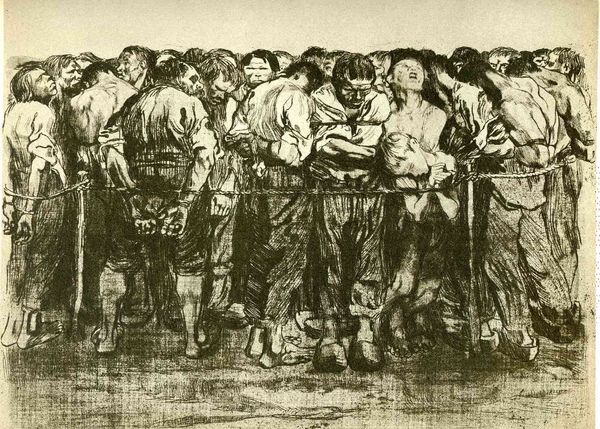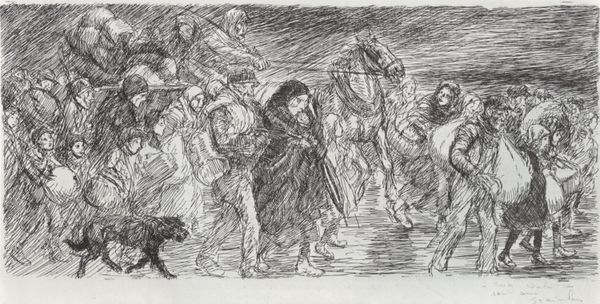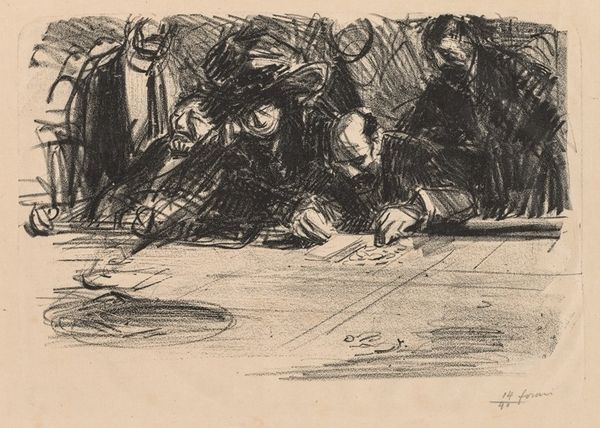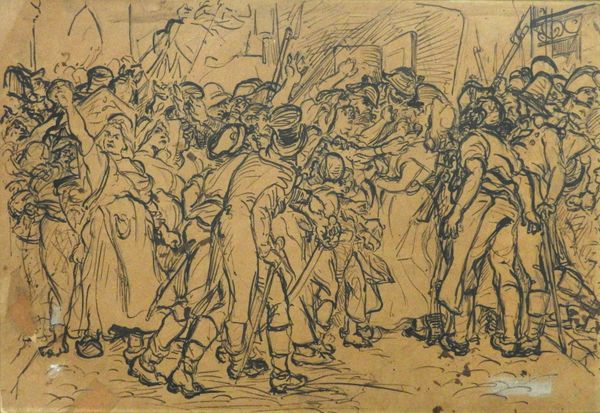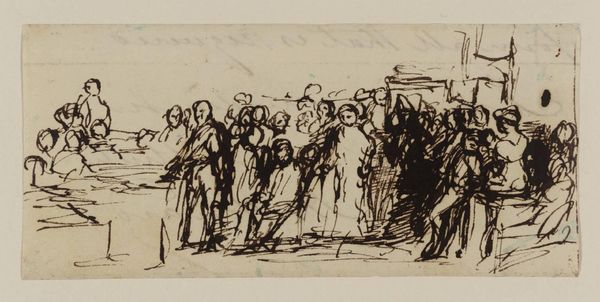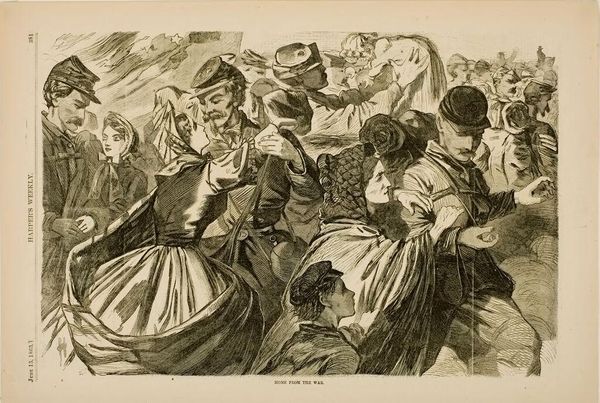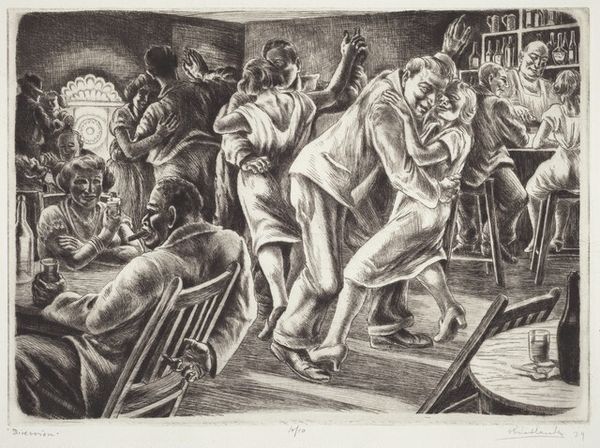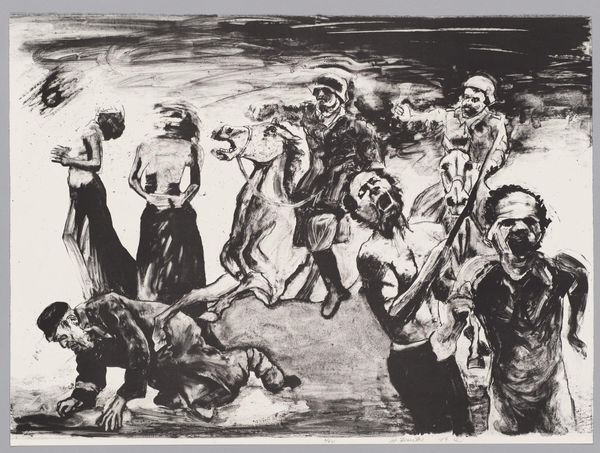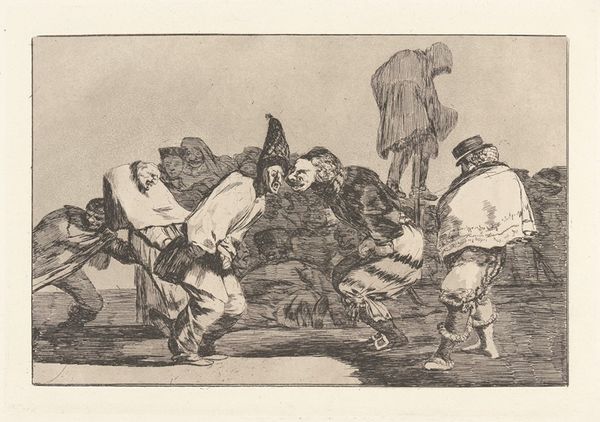
#
pencil drawn
#
amateur sketch
#
light pencil work
# print
#
pencil sketch
#
charcoal drawing
#
charcoal art
#
pencil drawing
#
portrait drawing
#
pencil work
#
graphite
Dimensions: Image: 227 x 340 mm Sheet: 266 x 381 mm
Copyright: National Gallery of Art: CC0 1.0
Editor: Here we have Myer Abel’s "Dance Marathon," created around the 1930s. It's a print, and the composition is incredibly striking, depicting several couples embracing in what seems like a very strained manner. The image makes me feel exhausted just looking at it. What stands out to you in this piece? Curator: The historical context is crucial. Dance marathons emerged during the Great Depression as desperate entertainment. Abel’s print poignantly captures the public spectacle of private suffering. It’s not just physical exhaustion; it's the emotional toll of poverty and the societal pressure to perform endurance for an audience, don't you think? Editor: Absolutely, that performance aspect didn't immediately click. Were these events seen as exploitative at the time, or was it purely entertainment? Curator: Both, often simultaneously. They provided an escape for audiences and a slim chance of prize money for contestants, but they were heavily criticized for their predatory nature. Think about how the media shaped public perception – were these events portrayed as gritty survival stories, or spectacles of human desperation? And how might Abel be commenting on that portrayal? Editor: That’s a powerful way to consider it. The figures almost seem to merge together, losing their individual identities within the group, all performing the same function. It underscores the depersonalization that comes with such desperate circumstances. Curator: Precisely. Consider the artistic choices. The blurred lines, the lack of distinct facial features... They reinforce the idea of these dancers as cogs in a machine, fueling the entertainment industry. It’s not just a depiction; it's a social commentary about economic hardship, performance and spectatorship in American culture. Editor: I hadn't really considered how much the technique reinforces the message. This gives me so much more to think about in terms of the relationship between art and social commentary. Curator: Indeed, looking at art through the lens of social history reveals that it is often both a reflection of and a critique of the world it inhabits.
Comments
No comments
Be the first to comment and join the conversation on the ultimate creative platform.

